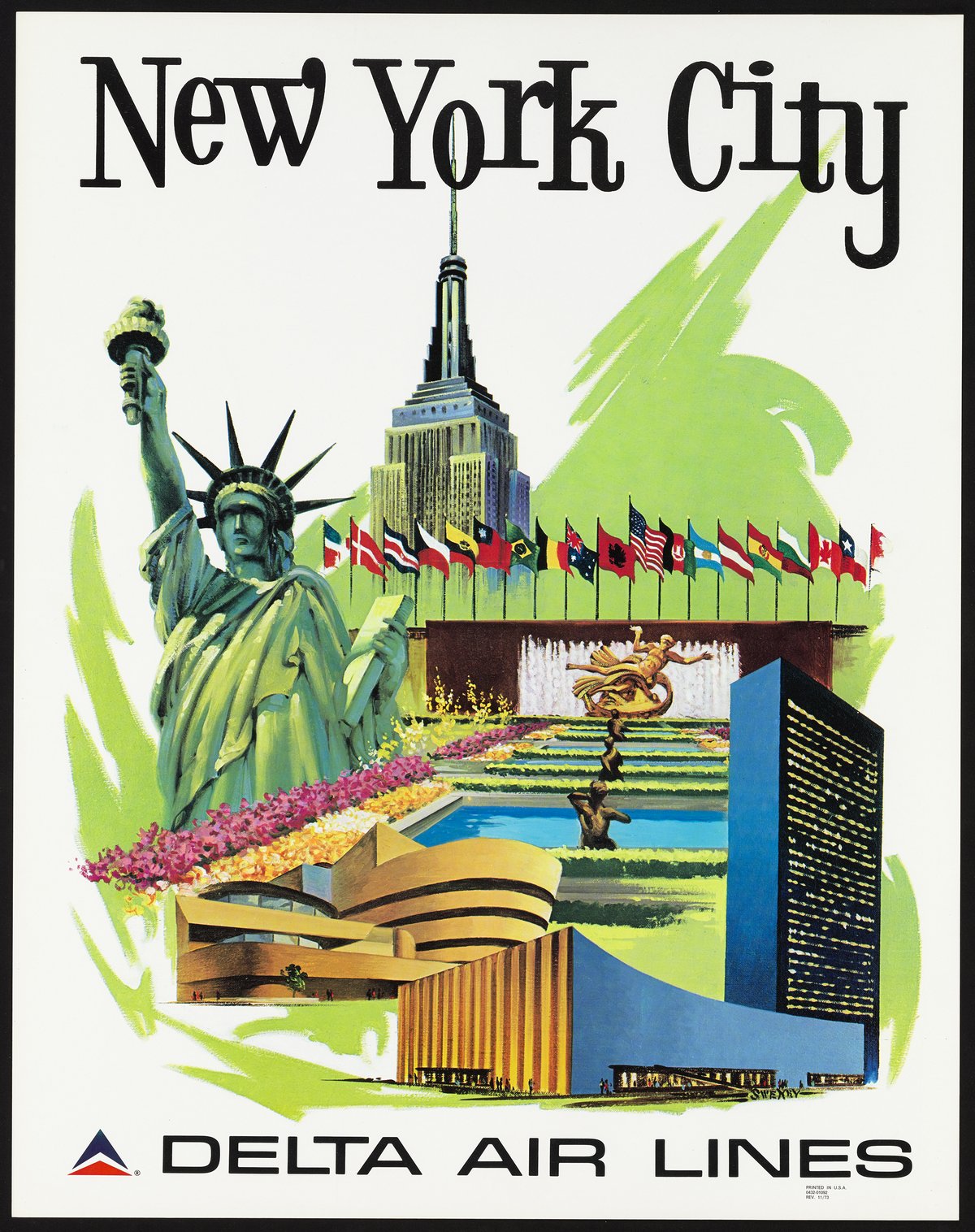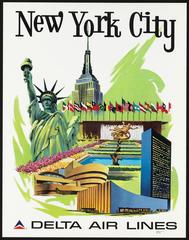
Solomon R. Guggenheim Museum: Visiting Hours, Tickets, and Historical Sites Guide 2025
Date: 14/06/2025
Introduction
The Solomon R. Guggenheim Museum, located on Manhattan’s Upper East Side, stands as a global icon of modern and contemporary art. Famed for Frank Lloyd Wright’s revolutionary spiral architecture, the Guggenheim is both a New York City historical site and a dynamic cultural institution. Whether you are an art aficionado, architecture enthusiast, or first-time visitor, this guide provides detailed information on the museum’s history, exhibitions, visiting hours, ticketing, accessibility, and travel tips, ensuring a seamless and enriching experience (Guggenheim Foundation, CityPASS, Webwire).
Table of Contents
- Historical Background
- Visiting Information
- Frank Lloyd Wright’s Architectural Legacy
- 2025 Exhibitions and Programs
- Visitor Resources
- Summary and Conclusion
- References
Historical Background
Origins and Founding Vision
The Guggenheim Museum was born from the transformative vision of Solomon R. Guggenheim (1861–1949), who, with the guidance of Hilla von Rebay, shifted from collecting Old Masters to championing abstract, “non-objective” art. In 1937, the Solomon R. Guggenheim Foundation was established to foster public understanding and appreciation of modern art, particularly avant-garde movements that challenged conventional representation.
The Museum of Non-Objective Painting
The museum’s earliest incarnation, the Museum of Non-Objective Painting, opened in 1939 in Midtown Manhattan. Under Rebay’s direction, it showcased Guggenheim’s growing collection of abstract works by artists such as Kandinsky, Chagall, and Pollock. The rapid growth and ambition of the collection soon necessitated a new, purpose-built home.
Commissioning Frank Lloyd Wright
In 1943, Frank Lloyd Wright was commissioned to design a building that would embody the spirit of modern art. Over 15 years and hundreds of sketches, Wright conceived an inverted ziggurat with a continuous spiraling ramp—a radical departure from the traditional museum “box”—creating a seamless flow for art appreciation and visitor movement (Archeyes, e-a-a.com).
Construction and Opening
After delays caused by war and zoning disputes, the Guggenheim acquired its current Fifth Avenue site in 1951. Construction began in 1956, but both Guggenheim and Wright passed away before the building’s completion. The museum opened to the public in 1959, immediately recognized as an architectural marvel and a bold statement in the heart of New York (ArchDaily).
Architectural Significance and Evolution
Wright’s design—with its striking spiral ramp, domed skylight, and smooth white concrete—has become one of the most recognizable museums worldwide. Despite initial criticism regarding its unconventional gallery spaces, the building has since gained UNESCO World Heritage status and inspired generations of architects.
Subsequent expansions, including the 1992 annex by Gwathmey Siegel & Associates and the 2001 Sackler Center for Arts Education, have equipped the museum for contemporary programming while preserving Wright’s vision. Major restorations in the 2000s further ensured the structure’s longevity and accessibility.
Global Impact and the Guggenheim Foundation
The Guggenheim Foundation oversees the museum’s strategic direction and has spearheaded the creation of affiliated museums in Venice, Bilbao, and elsewhere. The institution continues to break new ground, championing underrepresented artists and curators and serving as a platform for cultural dialogue.
Visiting Information
Hours and Admission
- Tuesday–Sunday: 11:00 AM – 6:00 PM
- Saturday: Extended hours until 8:00 PM
- Monday: Closed
- Closed: Thanksgiving and Christmas Day
Admission:
- Adults: $25
- Seniors (65+): $18
- Students (with valid ID): $18
- Members and children under 12: Free
Advance online ticket purchase is highly recommended, especially for weekends and special exhibitions (Guggenheim Foundation).
Accessibility
The Guggenheim is fully accessible with elevators, ramps, and accessible restrooms. Wheelchairs are available at the coat check, and assistive listening devices, large-print guides, and ASL tours can be arranged. Service animals are welcome.
Directions and Travel Tips
- Address: 1071 Fifth Avenue at 89th Street, New York, NY 10128
- Subway: 4, 5, or 6 to 86th Street, then a 10-minute walk
- Bus: M1, M2, M3, M4 to 5th Ave/89th–90th St
- Parking: Limited street parking; nearby garages available (Trip.com)
Best Times to Visit
For a quieter experience, visit on weekday mornings or late afternoons. Saturday evenings (6:00–8:00 PM) often feature reduced admission and lighter crowds.
Amenities and Nearby Attractions
- Museum Shop: A top NYC destination for art books, gifts, and design objects (Loving New York).
- Dining: On-site café offers light fare. Many restaurants are nearby, and Central Park is ideal for a picnic.
- Restrooms, coat check, and stroller access are available.
- Nearby: Metropolitan Museum of Art, Cooper Hewitt Smithsonian Design Museum, and Central Park.
Frank Lloyd Wright’s Architectural Legacy
Vision and Design Philosophy
Wright’s “organic architecture” principle is embodied in the Guggenheim’s spiral form, fluid spaces, and harmonious integration with its urban surroundings and Central Park. The interior ramp allows for an immersive, unbroken art-viewing journey (Archeyes).
Engineering and Spatial Innovation
The museum’s construction required innovative engineering, including custom concrete formwork to achieve its curves. The 92-foot-tall central rotunda, capped by a glass oculus, bathes the space in natural light, while the ramp’s gentle incline offers accessibility and unique sightlines (ArchDaily).
Reception and Lasting Influence
Initially controversial for overshadowing the art, Wright’s design is now celebrated for redefining museum architecture and influencing iconic structures worldwide. Architects such as Zaha Hadid and Frank Gehry have cited the Guggenheim as inspiration (CityPASS).
Renovations and Preservation
Major renovations in 1992 and 2005–2008 restored and modernized the building while maintaining historical integrity. The Guggenheim remains a model for balancing preservation with contemporary needs (Archeyes).
2025 Exhibitions and Programs
Major Exhibitions
- Rashid Johnson: A Poem for Deep Thinkers (April 18, 2025–January 18, 2026): The museum’s largest-ever survey of Johnson’s work, exploring social identity and the Black intellectual tradition (Webwire, Ocula).
- Gabriele Münter: U.S. Monographic Exhibition (Opens November 7, 2025): Landmark show highlighting the German expressionist’s pioneering role in early abstraction.
Collection in Focus Series
- Beatriz Milhazes: Rigor and Beauty (March 7–September 7, 2025): Celebrates the Brazilian artist’s exuberant abstraction (Webwire).
- Faith Ringgold and Artistic Lineages (May 9–September 7, 2025): Juxtaposes Ringgold’s work with modernists and contemporary artists she influenced (Ocula).
- The Rea Collection (September 2025): Showcases modern masters from a prominent private collection (Webwire).
Thematic Installations
- On End: Vertical Sculpture in the 20th and 21st Centuries (from July 25, 2025): Features totemic works by Brancusi, Giacometti, Bourgeois, and others, tracing the evolution of vertical sculpture.
Guided Tours and Special Events
The museum offers highlights tours, architecture-focused tours, and family programs. Special events, lectures, and workshops are held regularly—check the events calendar for details.
Visitor Resources
Museum Shop and Dining
Browse the acclaimed museum shop for art-inspired gifts. Enjoy light meals at the café, or sample nearby Upper East Side eateries (Secret NYC).
Photography and Social Media
Non-flash photography is permitted in permanent galleries, but may be restricted in special exhibitions. Share your visit with #Guggenheim and #Guggenheim2025.
Tips for a Memorable Visit
- Book tickets online to skip lines.
- Begin your tour at the top of the spiral and walk down for optimal viewing.
- Use the complimentary or downloadable audio guide.
- Allocate 2–3 hours for your visit; art lovers may want longer.
- Visit nearby attractions to round out your cultural experience.
Frequently Asked Questions (FAQ)
Q: What are the Guggenheim Museum’s visiting hours?
A: Tuesday–Sunday, 11:00 AM–6:00 PM (Saturday until 8:00 PM). Closed Mondays and major holidays.
Q: How much are tickets?
A: Adults $25, seniors and students $18, members and children under 12 free.
Q: Is the museum accessible?
A: Yes, with elevators, ramps, accessible restrooms, and assistive services.
Q: Are guided tours and audio guides available?
A: Yes, in multiple languages. Check the website for schedules and downloadable guides.
Q: Can I take photos?
A: Non-flash photography is allowed in most galleries; restrictions apply to special exhibitions.
Q: How do I get there?
A: By subway (4, 5, 6 to 86th St), bus (M1–M4), or nearby parking garages. The museum is opposite Central Park.
Q: What else can I see nearby?
A: The Metropolitan Museum of Art, Cooper Hewitt, and Central Park are within walking distance.
Summary and Conclusion
The Solomon R. Guggenheim Museum is a cornerstone of New York City’s cultural landscape, merging Frank Lloyd Wright’s visionary architecture with one of the world’s most significant collections of modern and contemporary art. The museum’s ongoing commitment to innovation, inclusivity, and education is reflected in its landmark exhibitions, accessible design, and prime location near other major attractions. Whether you are visiting for the world-class art, the architectural marvel, or both, planning ahead with this guide will ensure a rewarding and memorable experience.
To maximize your visit:
- Purchase tickets in advance.
- Check the latest exhibition schedule.
- Utilize amenities and guided resources.
- Explore nearby cultural sites.
For up-to-date visiting hours, ticket information, and special program details, visit the official Guggenheim Museum website. Download the Audiala app for curated audio guides, interactive maps, and travel tips, and follow us on social media for the latest updates.
References
- Guggenheim Foundation
- CityPASS
- Webwire
- Ocula
- Trip.com
- The Better Vacation
- Secret NYC
- Loving New York
- Archeyes
- e-a-a.com
- ArchDaily
- Time Out
- Google Arts & Culture
























































































































































































































































































